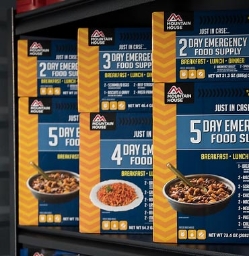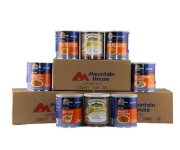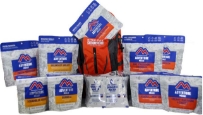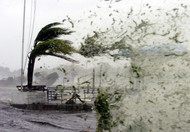How to Survive a Hurricane
Posted by Nitro-Pak on Feb 22nd 2020
How to Survive a Hurricane
With the arrival of each hurricane season people living along the coasts brace themselves for the potential big one. Some have lived through more than one big hurricane, vestiges of the disasters still standing as vivid memories. As news reports track the path and intensity of each season’s storms, coastal residents watch trying to decide whether to shelter in place or take their family and go. Numerous considerations will shape those decisions within an overarching framework of the family’s safety.
Sheltering in Place
Staying put is usually the best strategy. It’s the best strategy if your home is not in a flood zone and can withstand the high winds of the approaching storm. First, consult storm surge hazard maps to determine if you are safely outside of inundation areas. Familiarize yourself with the Saffir-Simpson Hurricane Wind Scale to help assess the structural limits of your own home. Even the 98-110 mph winds of a category 2 hurricane can strip the roofs of well-constructed houses. Boarding up windows and reinforcing exterior doors against winds and debris will help your home weather the storm.
Once the safety of the shelter itself, your home, is sound move on to the other emergency essentials;
Water
A clean supply of drinkable water during, and the lingering days after, any given disaster is vital. Flood waters can contaminate drinking water systems and render water treatment facilities inoperable. Stockpile enough water for each family member for a minimum of 3 days but given the lasting effects of past hurricanes storing away a week’s supply or more would not be unwarranted. A gallon for each person, per day is a good rule of thumb to follow. As a contingency, make sure you’re able to boil water from other sources and invest in a quality water filter.
Food
Today’s range of food types and preservation methods is wide but for planning purposes base your stockpile quantities on individual caloric needs. For the average, moderately active person between the ages of 14-40, 2,000-2,800 calories a daily is sufficient. While dry goods and canned or dehydrated foods are viable options, freeze-dried prepackaged meals may be the easiest, longest lasting of the emergency food choices. Stored at 50-60 degrees Fahrenheit in a dark, dry place individual freeze-dried meal packets have shelf lives of 5-10 years.
Power
When we talk power, we mean electrical power. The job of supplying this power falls to emergency generators, of which there are two main types, the portable gasoline-powered type and the permanent standby model. If there is a need is for only a few lights, and perhaps a couple of fans and a refrigerator a portable and less expensive type will suffice. However, if power needs are greater — for instance a well pump, a freezer or an air conditioner — a standby generator, fueled by propane or natural gas and starts automatically when the power goes off is a more effective option.
Evacuation
Evacuating or bugging-out is the strategy if staying home is simply not an option, the danger is too great. Whether the choice is to head for the nearest evacuation center or to get as far from the storm as possible before it makes landfall, plan the route you will take including alternate routes. Each member of the family will also needs a bug-out bag. The must-haves for each bag include;
• Enough food and water for at least 3 days
• A well equipped medical kit to treat and manage a range of illnesses, pain, injuries and prevent infections, making sure to include regularly needed prescription medications and other items (contact lenses, eyeglasses, hearing aids, syringes, EpiPens)
• Comfortable clothing, waterproof layers and sturdy footwear.
• Flashlights, local area maps, radio to stay apprised of response efforts.
References:
http://www.epa.gov/hurricanes/
http://www.nhc.noaa.gov/aboutsshws.php
http://www.state.nj.us/njoem/plan/prot-act-shelter.html
http://noaa.maps.arcgis.com/apps/StorytellingTextLegend/index.html?appid=b1a20ab5eec149058bafc059635a82ee
http://www.ready.gov/evacuating-yourself-and-your-family
http://serc.carleton.edu/NAGTWorkshops/health/case_studies/hurricane_Katrina.html





